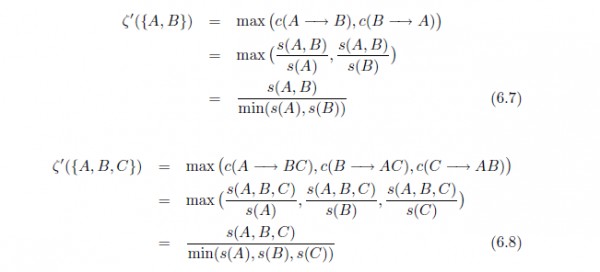Repeat the analysis in parts (a) and (b) by replacing the min function with a max function.
What will be an ideal response?
Let
?
({A1, A2, ··· , Ak}) = max( c(A1 ?? A2, A3, ··· , Ak), ···
c(Ak ?? A1, A3 ··· , Ak?1))
Since s(A, B, C) ? s(A, B) and min(s(A, B), s(A, C), s(B,C)) ? min(s(A), s(B), s(C))
? min(s(A), s(B)), ?
({A, B, C}) can be greater than or less than ?
({A, B}).
Hence, the measure is non-monotone.
You might also like to view...
Show the output of the following code.
```
#include
The phrase programming _____________ refers to a way of conceptualizing and structuring the tasks a computer performs.?
Fill in the blank(s) with the appropriate word(s).
Find the solution of the system algebraically. 
A. ![]()
B. ![]()
C. ![]()
D. ![]()
E. no solution
In the ADT list, when an item is inserted into position i of the list, ______.
a) the position of all items is increased by 1 b) the position of each item that was at a position smaller than i is increased by 1 c) the position of each item that was at a position greater than i is increased by 1 d) the position of each item that was at a position smaller than i is decreased by 1 while the position of each item that was at a position greater than i is increased by 1